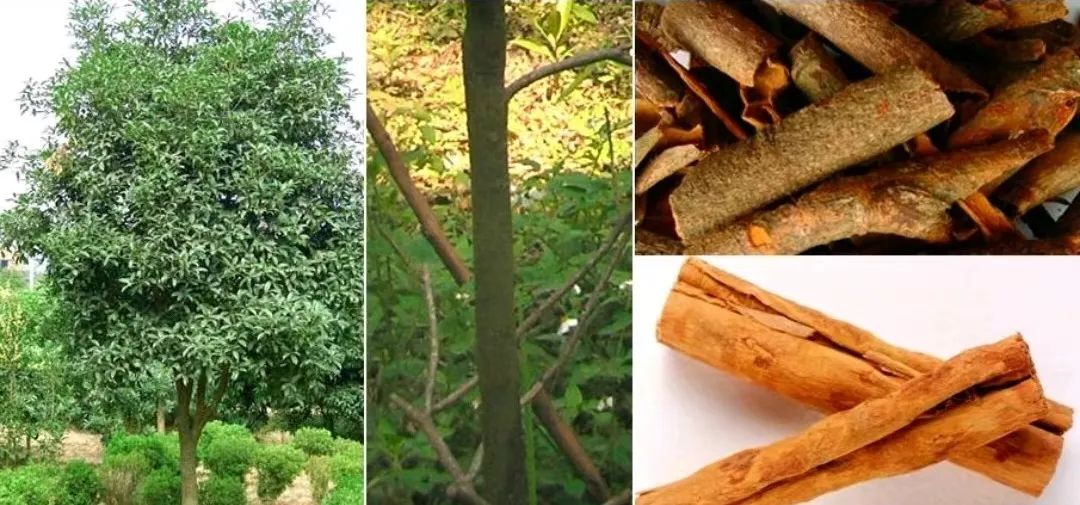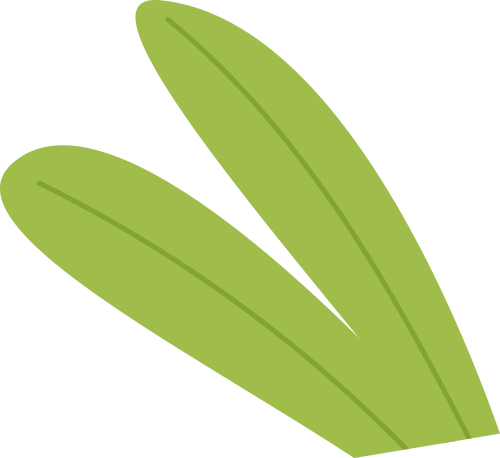
Cinnamon
– Chinese Herbal Name –
Rou Gui
Category: Warming Interior Herbs
· Overview ·
Cinnamon, known as Rou Gui in Chinese medicine, is the dried bark of the plant Cinnamomum cassia Presl from the Lauraceae family. It is harvested in the autumn and dried in the shade.

· Properties of the Herb ·
1
Parts Used

The dried bark of the plant.

Flavor and Properties
2
Flavor: Spicy, Sweet; Nature: Very Hot. Channels: Kidney, Spleen, Heart, Liver.
3
Dosage and Administration

When decocting Cinnamon for internal use, the common dosage is 2-5g, and it should be added towards the end of the cooking process, not boiled for long.
For Cinnamon powder taken orally, the usual amount is 1-2g; this herb has a relatively mild effect, and the dosage can be increased under the guidance of a physician.
For external use, it can be ground into powder and applied as a poultice or soaked in alcohol and applied to the affected area.

Preparation Method
4
Remove impurities and coarse bark. Crush before use.
· Functions and Indications ·
Cinnamon is used for cold pain in the abdomen, vomiting and diarrhea, coldness and pain in the lower back and knees, cold hernia abdominal pain, cold dampness causing pain, stagnation leading to dysmenorrhea, blood dysentery, intestinal wind, trauma swelling and bleeding, etc.

01
Kidney Yang Deficiency Syndrome
Used for insufficient Kidney Yang, with symptoms such as cold pain in the lower back and knees, impotence, frequent urination at night, and nocturnal emissions. Often combined with Fu Zi (Aconite), Shu Di Huang (Rehmannia), and Shan Zhu Yu (Cornus).

02
Floating Yang Deficiency Syndromes
Used for deficiency of Yuan Yang, with symptoms such as dizziness, flushed face, shortness of breath, and weak pulse. Can be combined with Shan Zhu Yu (Cornus), Wu Wei Zi (Schisandra), and Ren Shen (Ginseng).

03
Cold Stagnation Pain
-
Treats chest pain due to insufficient Yang and invasion of cold, often combined with Fu Zi (Aconite), Gan Jiang (Dried Ginger), and Chuan Jiao (Sichuan Pepper).
-
Treats cold pain in the stomach and abdomen, can be used alone or combined with Gan Jiang (Dried Ginger), Gao Liang Jiang (Galanga), and Ping Ji (Alpinia).
-
Treats cold hernia abdominal pain, often combined with Xiao Hui Xiang (Fennel), Chen Xiang (Agarwood), and Wu Yao (Lindera).
-
Treats menstrual disorders and dysmenorrhea due to cold stagnation and blood stasis, often combined with Chuan Xiong (Ligusticum), Dang Gui (Angelica), and Chi Shao (Red Peony).
-
Treats cold dampness causing pain, often combined with Du Huo (Angelica Pubescens) and Sang Ji Sheng (Mulberry Mistletoe).
Additionally, for those with chronic illness and deficiency of Qi and blood, adding a small amount of this herb to Qi and blood tonics can invigorate Qi and blood growth, enhancing the effects of tonifying herbs.
· Precautions ·
Use with caution in individuals with bleeding tendencies and pregnant women; should not be used with Chi Shi Zhi (Halloysite).
Reminder
Note: The content is for reference only and should not be used as a basis for diagnosis or treatment. Please follow medical advice!

If you like this article, remember to click the “Read” button at the bottom right of the article, or share it with your friends!Want to maintain your health daily? Follow us! ⊙ Note: This public account is a platform for sharing and exchanging knowledge about Traditional Chinese Medicine. The articles are for learning and reference only. For any medication or treatment plans, please consult a licensed physician.This article contains images sourced from cooperative copyright libraries and Jiu Daifu; some images are sourced from the internet and are for educational exchange only. Copyright belongs to the original authors. If there is any infringement, please inform us for removal.
⊙ Note: This public account is a platform for sharing and exchanging knowledge about Traditional Chinese Medicine. The articles are for learning and reference only. For any medication or treatment plans, please consult a licensed physician.This article contains images sourced from cooperative copyright libraries and Jiu Daifu; some images are sourced from the internet and are for educational exchange only. Copyright belongs to the original authors. If there is any infringement, please inform us for removal.
⊙ For business cooperation, please contact WeChat: tudi1970

